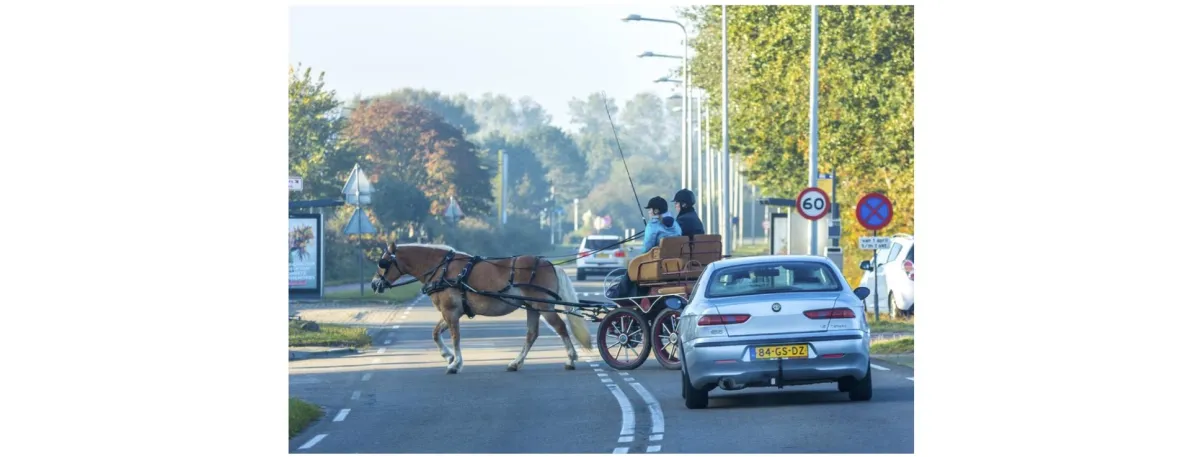The Human View™ Blog

Of Buggy Whips and Gas Pedals
A friend of mine often gauges a person’s true flexibility by asking them the question, “When was the last time you really changed your mind?”
I don't know a single person who expected America's economy to be unfolding as it has been so far this year. So, as it dawns on us that “What’s worked before may not work going forward,” changing our minds – perhaps even radically, may become de rigueur: an operational reality.
A quiet but consequential shift in how benefit communications must evolve
Economic contraction signals are intensifying, particularly among small and mid-sized businesses. Inventories are already tightening. Margin and profit forecasts are thinning. Confidence is getting wobblier. And as businesses start feeling such, and start slowing down, the entire benefits value chain feels it, too—from carriers and platforms to brokers and enrollment vendors.

For many in the benefits space, this may easily mean a shrinking of “the employer prospect pool” - but it won’t happen all at once. It’ll happen in waves. Quiet layoffs. Frozen hiring. Postponed plan renewals. RFPs that don’t go out this year. But the net effect will be the same: fewer doors open, and more competition at every one of them.
This is where communication—real communication—moves from “nice to have” to mission-critical. And the tools we’ve long relied on to do that job—linear education, demographic targeting, generic plan comparisons—are showing their age.
Of buggy whips
For decades, we’ve asked employees to understand benefits through the lens of logic. “Let us educate you. Let us walk you through the options. Let us show you the numbers.” This is reasonable, rational, well-meaning—and increasingly ineffective.
As I’ve noted before, I can’t tell you how many times I’ve heard an HR or benefits person say, “If we could just do a better job of educating our employees, they’d make better decisions." And that’s true – right up to where you keep hitting that “upper limit problem.”
A horse and carriage:
Can get you from Point A to Point B.
Worked fine in its time.
But in a faster, noisier, more complex world—it simply doesn’t move people with the speed or relevance required.

What works better? A car. Any car. The make and model don’t matter as much as the fact that it has an engine—a system that converts potential into motion – and a gas pedal.
Of gas pedals
In today’s benefits world, the best engines are powered by psychographics: messaging that speaks to people’s values, motivations, and identity—not just their circumstances. When you understand why someone chooses (or avoids) a benefit—not just who they are or what role they hold—you build communications and outreach strategies that resonate faster, deeper, and with less waste.
Markets are tightening already – yes? The stakes are getting higher. With potentially fewer employers in play – and with fewer employees in their jobs, every engagement opportunity matters more, you can’t afford to speak into the void.
Demographics help, but only scratch the surface.
Behavior-based targeting can tell you what someone did—but not why.
Situational or lifecycle messaging adds context, but often misses emotional tone.
These are better than nothing. But they’re not engines. They’re upgrades to the carriage. Useful, but slow.

Psychographic messaging answers the question “Why should I care?” before the employee even has to ask. It surfaces the implicit motivations behind engagement—autonomy, security, purpose, belonging—and aligns the message accordingly.
A turning point, not a gimmick
Psychographics aren’t a silver bullet, nor are they new. But they’ve often been treated as optional. Or met with another “Oh no! Change? The way we’ve always done things?!” But reality is upon us with another “Adapt or else.”
As the margin for error shrinks, the margin for generic messaging shrinks with it.
The shift we’re seeing in the economy is real, and it will pressure every link in the benefits value chain. One of my executive friends once said, “It’s like we’ve been trying to perform surgery with a blunt instrument.” Exactly. We don’t need “a bigger hammer,” we need more precision.
We don’t need perfect solutions. We need better vehicles.

The last word
Psychographics won’t change what’s unfolding in our broader economy, nor the impacts to the benefits world. But a better buggy whip won’t help you move more nimbly, nor faster – a gas pedal can, and will. And for that, you need a car. Let’s hit the gas.
~ Mark Head
© 2025. All Rights Reserved.

Click the green button or the blue button (below) to visit our scheduling pages.




Mark Head
President
With 4 decades of combined experience in employee benefits consulting, wellness and health management, Head brings a unique combination of dynamic perspectives into a clear vision of where the future of health care is moving - and it's moving towards deeper human connection, awareness, and engagement...
Follow Us On
© 2015 - 2025, MDH Consulting, LLC. All Rights Reserved.

